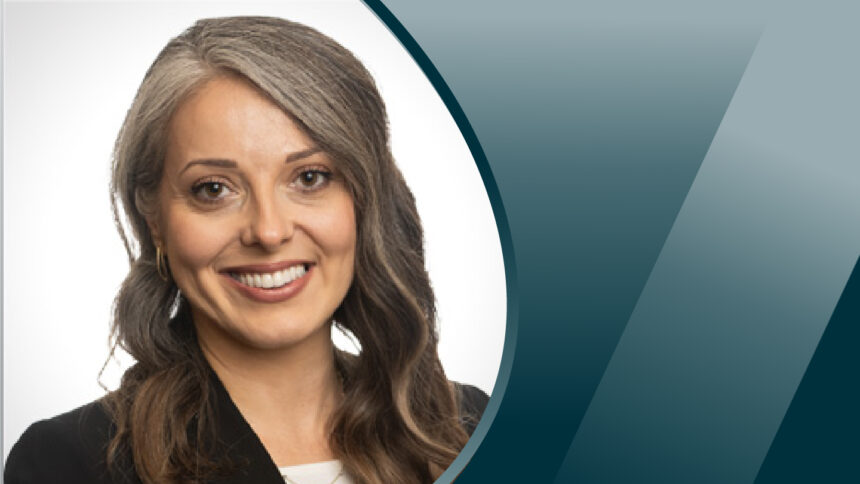
The 55-year-old female resident with multiple wounds on both of her arms wasn’t this nurse’s favorite.
Yes, the nurse had provided wound care over the years to many people who were irritable and demanding. But what bothered her about this resident was how she had acquired her wounds — using the synthetic opioid fentanyl to get high.
In the past two years, much of the nation’s opioid supply has been adulterated with xylazine, a veterinary tranquilizer that prolongs euphoria but also causes deep skin wounds.
Though the nurse wanted to feel sympathetic toward this resident in obvious pain, she had negative feelings about people who use illicit drugs, tending to blame them for hurting themselves and the people who care about them.
A 20-year opioid crisis
Research shows that more Americans are suffering from opioid use disorder (OUD), and more individuals with long-term OUD are aging. Few communities, urban or rural, have been spared from the increased overdoses and deaths from the current phase of what is now a 20-year Opioid Crisis with years to go.
Nursing homes have the opportunity — and, some advocates would say, the responsibility — to provide high-quality, compassionate care to this growing population. Not only can they provide wound care and other post-acute care for the medical consequences of OUD, but they can play a key role in helping residents with OUD make successful transitions into community-based substance use disorder (SUD) treatment upon discharge from short-term rehab stays.
Nursing homes serving residents with OUD would also be developing a new potential pool for admissions at a time when many facilities’ census has been depleted by the effects of the pandemic.
Barriers to SNF care of residents with OUD
While some nursing homes have implemented programs to care for residents with OUD, the American Society of Addiction Medicine found that less than one-third provide opioid treatment programs to residents.
Why are there so few? There have been several challenges:
- Nursing homes today are often understaffed with overworked employees, making it difficult to provide proper care to high-need, opioid-dependent residents.
- Caring for individuals with OUD requires staff members who understand that addiction is a disease, not a moral weakness. They need instruction in the use of specific medications and counseling techniques to provide optimal care. It is uncommon for nursing homes to have enough employees trained to provide OUD care.
- Current reimbursement rates do not adequately support OUD care in the nursing home setting. Oftentimes, nursing homes cannot afford specialized care, medication and counseling, all of which can have significant financial impact on the facility’s bottom line.
Upgrading staff training
A first step for overcoming these challenges and becoming part of the OUD continuum of care is for nursing homes to create a more competent and confident workforce to care for the residents with OUD they already serve. The right training is essential. It should include the following components: understanding SUD, intervention techniques, communication skills and crisis management.
Who can provide this training? Many nursing homes coexist in urban neighborhoods or rural communities with SUD hospitals, residential facilities, intensive outpatient programs and outpatient providers with which they currently have little contact or relationship. Forming partnerships with these local addiction specialists to provide ongoing guidance, training and support for staff is an excellent way to begin to bridge the gap between LTC and SUD.
SNF nurses, rehab staff and nurse aides can learn about the disease of addiction and the evidence-based interventions for managing it. SNF social workers can learn about the network of available services to help transition residents once they are discharged from the SNF. For LTC facilities that lack the resources to fund such SUD training or the staffing capacity to devote to SUD care, these nearby SUD providers can be invited to provide onsite or telehealth services for residents, such as educational workshops, individual counseling or group therapy sessions.
In the best of all possible worlds, SNFs have the means to hire available staff, including nurses, aides, PT/OT therapists and social workers, with previous SUD experience. These new hires can demonstrate trauma-informed care and other therapeutic approaches toward residents with OUD and begin to change the attitudes and behaviors of other facility staff. They can also model the use of best practices, such as Motivational Interviewing and Medication-Assisted Treatment (MAT), that are proven mainstays of SUD care. For new employees with some SUD experience, supervision opportunities to promote greater expertise can be created through established partnerships with local SUD providers.
Creating innovative partnerships
While many SNFs don’t have the resources to make this a reality, there are newer models of behavioral health care in development. Certified Community Behavioral Health Clinics (CCBHCs) continue to expand across the country and are able to provide services outside of their clinics. Additionally, many states are utilizing State Opioid Response (SOR) funds to develop innovative models of care, with SOR-funded providers being potential resources for SNFs.
As more opioid treatment programs take advantage of the ability to provide mobile medication units, this may also be an opportunity to partner to improve access to MOUD, particularly methadone.
With more SUD training and mentorship, the nurse caring for the 55-year-old resident with arm wounds can overcome her stigmatizing attitudes and perhaps reticence about providing care. She can learn to see the resident’s wounds as the result of a devastating disease and not as self-inflicted. She can come to regard the resident’s irritability as a reaction to pain and possibly withdrawal symptoms. She can support that resident’s recovery by using motivational interviewing to foster motivation for following up with an SUD provider upon discharge home.
In short, the nurse can feel gratified about making a positive difference in the fight with a vulnerable resident and against a national drug crisis that affects many of us and our loved ones, young, middle-aged, and old.
The author gratefully acknowledges helpful input from Deb Peartree, RN; Debbie Witham, MSW, LMSW, JD; David Polakoff, MD, MSc; and Barry J. Jacobs, PsyD, in the creation of this column.
Dina Besirevic, RN, RAC-CT, RAC-CTA, CDONA, LSSGB, is a senior consultant with Health Management Associates (HMA), an independent national research and consulting firm. She joined HMA after serving Villa Healthcare in a variety of senior roles, including divisional director of clinical reimbursement. A registered nurse, she holds certification in restorative nursing, resident assessment coordinator-certified advanced, infection control for long-term care certification and director of nursing administration.
The opinions expressed in McKnight’s Long-Term Care News guest submissions are the author’s and are not necessarily those of McKnight’s Long-Term Care News or its editors.
Have a column idea? See our submission guidelines here.




